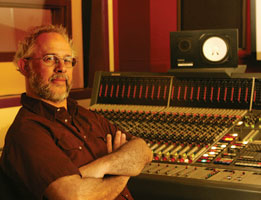|
|
The Analog Revival |
June 2006 |
|
Rather than taking back their former position as kings of electronic music, analog modular synths are the darlings of a relatively small group of enthusiasts and will probably remain so. But given the modest size of the market, the number of new analog modular products is impressive: when EM senior editor and analog enthusiast Gino Robair began writing this month's cover story (see ĺ─˙Analog Renaissanceĺ─¨ on p. 46), he discovered 11 new species of living, breathing modular beasts. These ancient monsters are finding new life for several reasons, among which are their big, fat sounds, their playability, the flexibility they offer with signal paths that can be altered by repatching a cable, and the fun their operators have twiddling their knobs. They look pretty cool, too, in a retro sort of way. And unlike modulars of old, most modules in these modern synths support common standards, so systems from different manufacturers usually play well with each other. But the biggest reason is a change in musical tastes. When analog modular synths first came on the scene, they were an instrument of choice for the avant-garde. But almost all popular music featured acoustic and electroacoustic instruments, and so most musicians wanted to focus on those sounds. Sample-based and physical-modeling synths were only a futuristic dream. If you wanted to record a trumpet part, you had to hire a trumpet player or play it yourself. In response, a primary goal of electronic musicians became emulating the sound of acoustic and electroacoustic instruments using subtractive analog synthesis. That remained a common goal as additive and early digital FM synths came on the scene. The problem was that analog synths weren't very good at sounding like acoustic instruments. Oh sure, they could sound like something that more or less resembled an acoustic instrument, but even with the best sound design, few people were fooled into thinking they were listening to the real thing ĺ─ţ and the real thing is what people wanted. That's why, when sample-based instruments arrived, they took over the market and analog synths went out of style, as did FM synths. But today, it's okay for music to sound overtly electronic. In fact, with many types of dance music, electric and acoustic instruments are most noticeable because they are surrounded by synthesized textures and beats. And if sounding electronic is your goal, then analog synthesizers are appropriate and powerful instruments of choice. In short, with modern electronic music, analogs can do what they do best. Hence the analog renaissance touted on our cover. Incidentally, our April cover apparently caused considerable confusion in some quarters. To clarify, the young fellow shown in the photo is a model, not ĺ─˙Hired Gunsĺ─¨ author and EM contributing editor Michael Cooper. Cooper is a tall, slender, middle-aged guy who has been engineering and producing music for a long, long time. |
